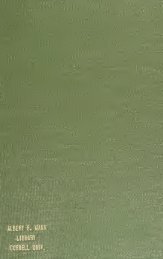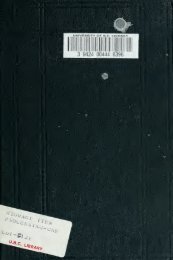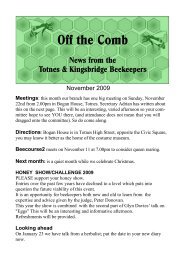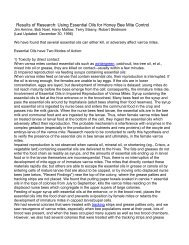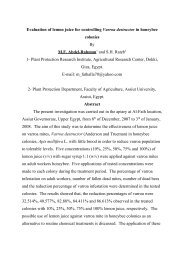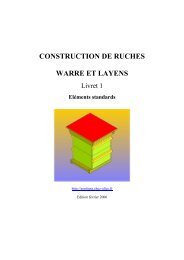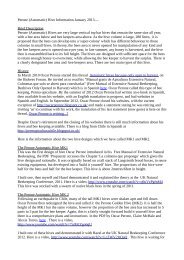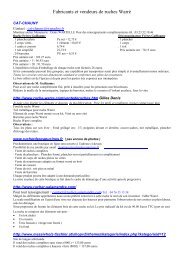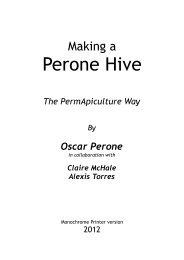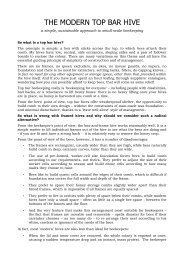You also want an ePaper? Increase the reach of your titles
YUMPU automatically turns print PDFs into web optimized ePapers that Google loves.
B. The day of <strong>the</strong> Cleansing Flight.<br />
As soon as <strong>the</strong> cleansing flight has begun, all waste-matter must be removed from <strong>the</strong><br />
bottom-board. Observations made at this time will supply much information that will<br />
complete information gained at <strong>the</strong> hive entrance. See page 60.<br />
Observation<br />
Explanation<br />
The colony has been restless<br />
throughout <strong>the</strong> winter. However,<br />
it has not been disturbed, it<br />
does not have poor food nor is<br />
it ill.<br />
This observation is essentially<br />
similar to that of a sick, disturbed<br />
or queenless colony. However<br />
<strong>the</strong> reasons are very different.<br />
To begin with, <strong>the</strong> first paragraph of <strong>the</strong> observations<br />
for November should be read.<br />
On <strong>the</strong> day of <strong>the</strong> cleansing flight, study of <strong>the</strong> accumulated<br />
waste matter found on <strong>the</strong> bottom board of<br />
<strong>the</strong> hives, occupied by partially or non-selected populations,<br />
immediately reveals obvious differences.<br />
Some colonies are found where <strong>the</strong> faecal matter is<br />
covered by a thick layer of dead bees. Thick streaks of<br />
faeces between which <strong>the</strong>re are dead bees and halfdeveloped<br />
pupae lead to <strong>the</strong> conclusion that <strong>the</strong>re has<br />
been an abnormally high consumption of winter provisions.<br />
Even before <strong>the</strong> day of <strong>the</strong> cleansing flight, <strong>the</strong> back<br />
window protected by a quilt is warm. Why? Because<br />
colonies which still nurse small areas of brood until<br />
December, often resume breeding in January. I have<br />
already found as early as <strong>the</strong> 15 th January, brood on<br />
three frames from a hive with a strong predominance<br />
of Italian bees, which had been devastated and whose<br />
frames were scattered on <strong>the</strong> snow. As wide a surface<br />
as a hand had already been sealed. On asking <strong>the</strong><br />
owner <strong>the</strong> value of <strong>the</strong> colony, he replied that it had<br />
never brought him any profit.<br />
Very few beekeepers are aware of this early breeding<br />
since a hive is never opened during November,<br />
December, or January. Realization of this early<br />
laying is only possible <strong>the</strong> actual day of <strong>the</strong> cleansing<br />
flight and one is not able to explain it. Many such<br />
colonies exist, at all <strong>the</strong> various stages of development,<br />
that one can think of. All crosses with Italian<br />
bees belong to this category.<br />
In <strong>the</strong> spring, <strong>the</strong>se colonies lose a large number of<br />
bees which die during flight, and due to this get reinforced<br />
much later. They have a good brood in Summer,<br />
fly a great deal without ever filling up <strong>the</strong>ir<br />
15



